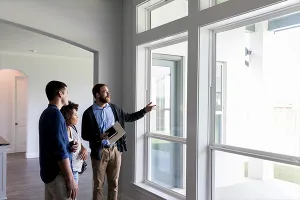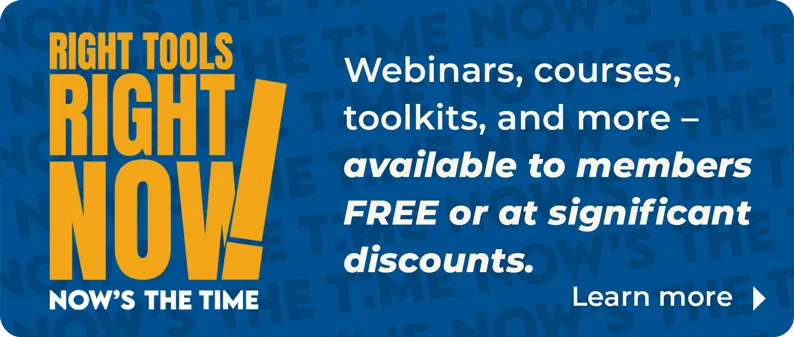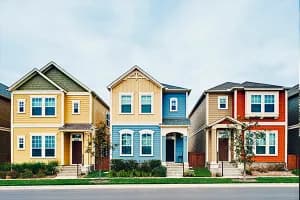Nationally, the homeownership rate peaked to 69.2% in 2004 Q2 and fell to a low of 62.9% in 2016 Q2. Only the Hispanic homeownership rate has surpassed the 2004 Q2 level for each race, from 47.4% to 48.9% (+1.5 ppt) while it has declined for White non-Hispanic (-2.5 ppt), Black (-5.7 ppt), and Other Race (-2.7 ppt). From 2012 when the housing market recovery started, the homeownership rate increased across all races and ethnicity, with the largest gain in the Hispanic homeownership rate (+2.6 ppt) compared to White non-Hispanic (+0.2 ppt), Black (+0.9 ppt), and Other Race (+0.9 ppt).
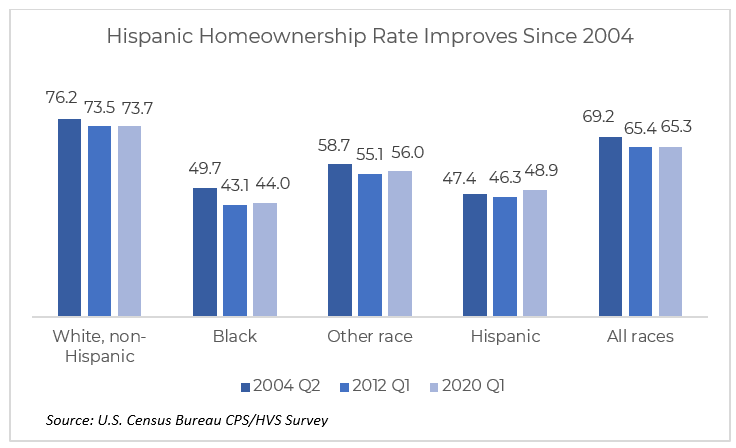
A big factor that explains the gain in the Hispanic homeownership rate is income gain. Over the period 2012-2018, the median income among all households of all races rose by 22%. However, Hispanic-headed households saw a larger gain in median household income of 27%, with median income rising from $40,417 to $51,404. Households in which the head of the family was an American Indian and Alaska Native or self-the race as Two or More Races also saw a large gain in median household income of 27%, but these income gains did not result in the same large homeownership rate gains as the income gains did for Hispanic-headed households.
|
Median Household Income |
||||||
|
2005 |
2012 |
2018 |
2005-2012 |
2012-2018 |
||
|
1.White alone |
$47,362 |
$54,729 |
$65,902 |
16% |
20% |
|
|
2 .Black or African American alone |
$29,225 |
$33,764 |
$40,232 |
16% |
19% |
|
|
5 .American Indian and Alaska Native |
$31,468 |
$35,310 |
$44,772 |
12% |
27% |
|
|
6 .Asian alone |
$57,192 |
$70,644 |
$87,243 |
24% |
23% |
|
|
7 .Native Hawaiian and Other Pacific Islander |
$42,515 |
$51,322 |
$61,911 |
21% |
21% |
|
|
8 .Some Other Race alone |
$34,441 |
$38,439 |
$48,983 |
12% |
27% |
|
|
9 .Two or More Races |
$38,281 |
$44,930 |
$59,199 |
17% |
32% |
|
|
All races |
$44,402 |
$62,527 |
$76,401 |
41% |
22% |
|
|
Hispanic/Latino/Spanish |
$35,005 |
$40,417 |
$51,404 |
15% |
27% |
|
|
Source: US Census Bureau, American Community Survey |
||||||
Not only did the median household income increase from 2012 through 2020, but the rate of unemployment fell as well, from 8.3% in January 2012 to 3.6% as of January 2020 (-4.7 ppt). Hispanics and Blacks saw the largest drops in unemployment rates. Among Blacks, the unemployment rate fell from 13.6% to 6% (-7.6 ppt), and among Hispanics, the rate of unemployment fell from 10.7% to 4.3% (-6.4 ppt). However, this reduction in unemployment rate translated into a higher homeownership rate among Hispanics that it did for Blacks.

Challenges ahead for Hispanics and preserving the gains in homeownership
The economic shutdown and social distancing measures to control the spread of coronavirus has affected all races, ages, and occupations. However, Hispanics, Native Hawaiian and Other Pacific Islanders, and Blacks face the greater economic risk because a larger fraction of households is headed by persons whose occupations are in food services, personal care, and transportation— 30% among Hispanic-headed households and 28% among Black-headed households.
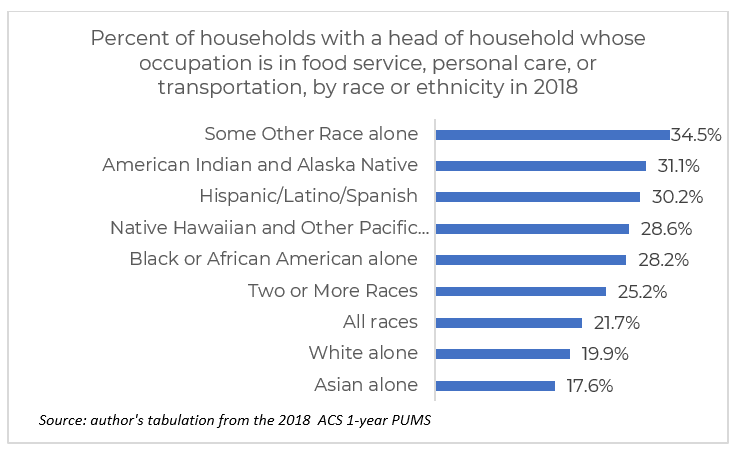
There are about 13 million households headed by food service, housekeeping and personal care, and transportation workers, and about 20 million if salespersons are included. About two -thirds of these homeowners have a mortgage and spent about $1,500 on housing cost (mortgage, insurance, taxes, utilities).
|
Homeownership among vulnerable occupations |
||||
|
Occupation |
Owned with mortgage or loan |
Home ownership rate |
Percent of owners with mortgage |
Selected monthly owner cost with mortgage |
|
Food Service |
3,220,335 |
51% |
70% |
$1,530 |
|
Housekeeping & Personal Care |
4,432,011 |
58% |
67% |
$1,504 |
|
Salesperson, other than estate brokers |
7,292,708 |
65% |
72% |
$1,693 |
|
Transportation |
5,169,947 |
61% |
67% |
$1,412 |
|
Source: Author’s tabulation from the 2018 American Community Survey, 1 year PUMS data |
||||
The additional $600 weekly pandemic unemployment assistance restored in about half the states the lost wage income among those filing for unemployment insurance benefits enabling them to pay their monthly mortgage or rent. This federally funded extra benefit expires in July 31. The average weekly regular insurance is only $373 nationally (based on 12 months ending 3/31/2020).
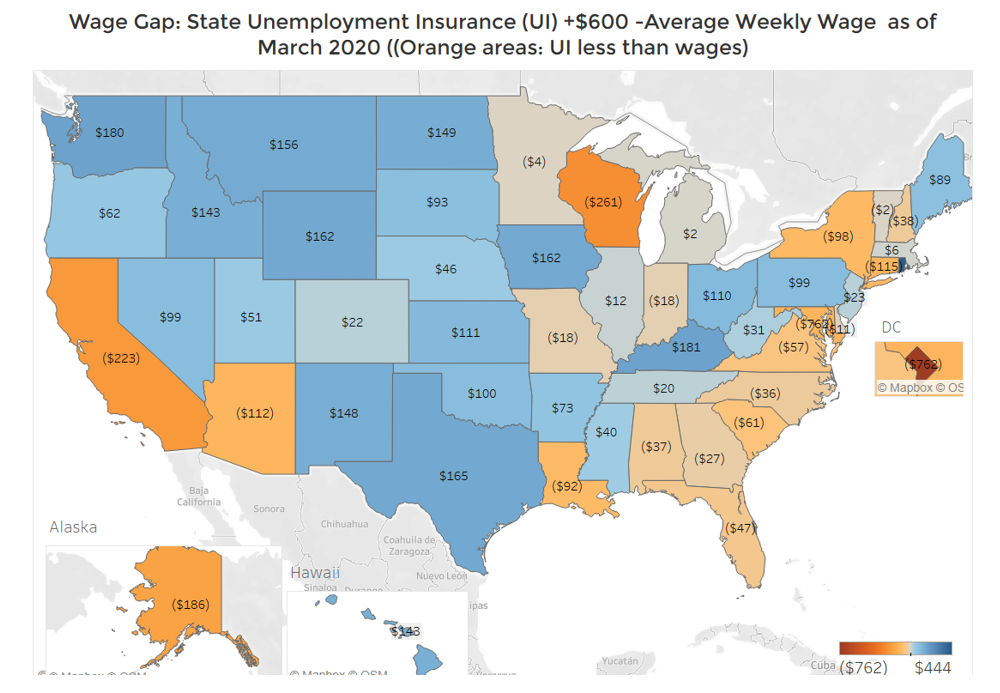
While many states have started to open, the number of open food and retail businesses is still down by about 20 to 50% in many areas as of May 30 relative to January levels, according to Homebase, a free scheduling and time tracking tool used by 100,000+ local businesses used in scheduling hourly employees in restaurant, food & beverage, retail and services that are largely individual owned.

The Social and Mobility Index developed by the Dallas Federal Reserve shows that mobility and social engagement is still down as of May 30 compared to January and February in many counties. This index is based on geolocation data on time and distance spent away from home from anonymous cell phones.
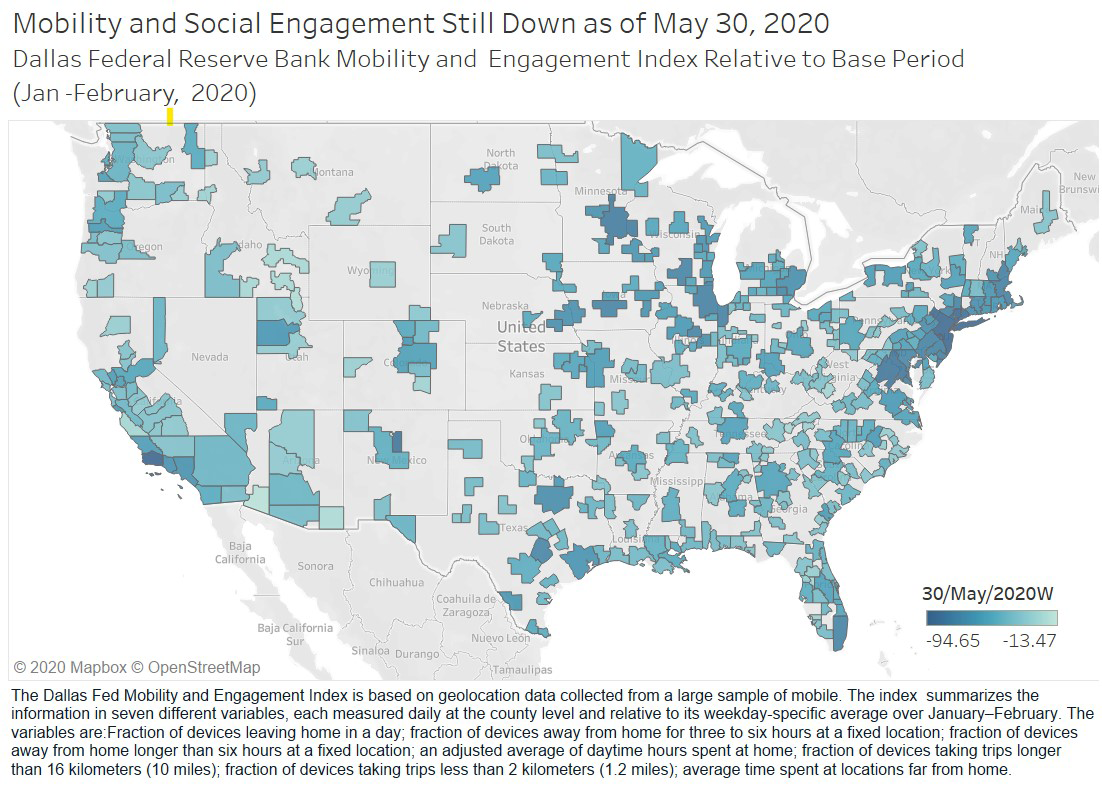
Preserving homeownership means enabling households to make their monthly mortgage payment. Enabling renters to transition into homeownership means they are able to continue making at least minimum payment on their credit card bills. About 1 in 3 mortgage applications are denied due to bad credit history, which can include missing card payments.
Select an ethnicity and hover over the map to view homeownership rate by state and by race or ethnicity from 2010 to 2018.
